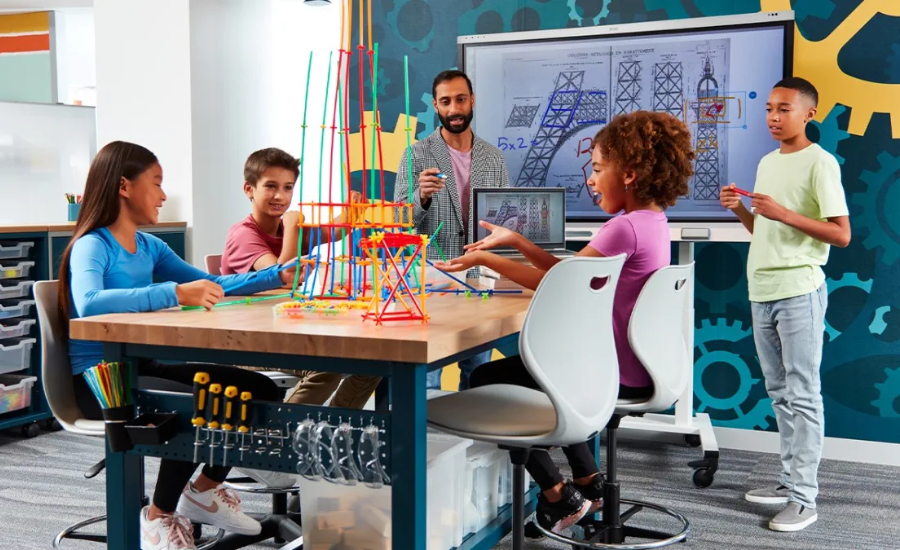Interactive Panel Displays: The New Must-Have Tool For Modern Classrooms
In recent years, educational technology has transformed classrooms into dynamic spaces of engagement and learning. Among the many advancements, one tool has taken center stage for its ability to revolutionize teaching and improve student interaction: the interactive flat panel display. This technology combines the clarity and functionality of a large digital screen with touch-screen capabilities, offering teachers and students a highly interactive, multimedia learning experience.
But what makes interactive flat panel displays the must-have tool in today’s classrooms? Let’s dive into the unique advantages and explore why schools around the world are choosing these displays to enhance learning and inspire students.
1. Unmatched Student Engagement
One of the biggest challenges educators face is capturing and retaining students’ attention. The traditional whiteboard setup can make it difficult for students to stay focused, especially in a world where digital content is everywhere. An interactive flat panel display tackles this problem head-on, allowing teachers to incorporate multimedia elements into lessons that can captivate students of all ages.
Imagine a history class where students can explore an ancient civilization with 3D maps and animations or a science lesson where they watch cells divide under a virtual microscope. The vibrant visuals, engaging animations, and hands-on elements of interactive flat panels draw students in, helping them connect with material on a deeper level. When students are engaged, they not only retain more information but are also more likely to develop a genuine interest in the subject.
2. Tailoring to Different Learning Styles
Every classroom is filled with diverse learners, each with unique needs and preferences. While some students excel with visual aids, others benefit from auditory cues, and some learn best when they can engage directly with the material. Interactive flat panel displays support these various learning styles, providing a multifaceted approach that can adapt to each student’s strengths.
For visual learners, the high-definition displays bring content to life with images, graphics, and videos that make concepts easier to understand. Auditory learners benefit from the ability to integrate sound clips and videos, and kinesthetic learners get to physically interact with the display. The hands-on nature of an interactive flat panel creates an inclusive environment, helping every student stay engaged and absorb information in a way that suits them best.
Additionally, these displays allow teachers to personalize lessons easily. They can quickly adjust content, pause for questions, or dive deeper into specific topics based on students’ interests. This flexibility allows for a more adaptive, student-centered approach to teaching.
3. Fostering Collaboration and Communication
Teamwork and communication are essential skills for students to develop, both for academic success and future careers. Interactive flat panels encourage collaboration by making it easy for multiple students to interact with the screen at once. This feature supports group activities and projects, allowing students to work together to solve problems, share ideas, and brainstorm.
For example, in a math class, small groups can work through equations together on the display, each student contributing to the solution. In language arts, students can annotate a passage or diagram on the panel, discussing and debating ideas in real-time. The interactive flat panel fosters a sense of community and teamwork, encouraging students to learn from each other and communicate effectively.
Moreover, these displays support remote collaboration, a vital feature in today’s educational landscape. Students in different locations can interact with the same materials and participate in lessons as if they were in the same room. This capability is especially useful in hybrid learning environments, where in-person and remote students benefit equally from interactive activities.
4. Increased Efficiency and Organization for Teachers
Interactive flat panel displays not only benefit students but also streamline teaching and organization for educators. With the ability to integrate multiple resources into a single tool, teachers can present slides, play videos, annotate documents, and even conduct quizzes—all from the display.
Gone are the days of juggling between devices or trying to manage multiple tools for a single lesson. An interactive flat panel provides everything teachers need in one place, allowing for a smoother flow of information and fewer classroom disruptions. Educators can easily transition between lesson elements, keeping students engaged without lengthy pauses or technical difficulties.
Interactive flat panels also allow teachers to save and share lesson materials. They can revisit or adjust previous lessons, making it easier to review topics or tailor content for individual students. For teachers, this technology represents not only a tool for instruction but a system for organization, simplifying their workload and freeing up time to focus on students.
5. Preparing Students for a Digital Future
We live in an increasingly digital world, and technology proficiency is essential for success in both higher education and the workforce. Interactive flat panel displays familiarize students with technology that mirrors what they’ll encounter beyond school. By using these displays regularly, students gain experience navigating digital tools, participating in virtual environments, and applying critical-thinking skills in a tech-driven setting.
From early grades through high school, students build digital literacy by interacting with a flat panel display. They learn to collaborate, present information, and problem-solve using a device that mimics the technology found in today’s offices and universities. In doing so, they not only learn their core subjects but also develop the digital confidence they’ll need in their future careers.
Furthermore, these panels keep pace with technological advances. They support software updates, ensuring that educators and students always have access to the latest features, educational apps, and online resources. Schools that invest in interactive flat panels are not just upgrading their classrooms; they’re equipping students for a future where technology will be integral to nearly every profession.
6. Cost-Effective and Environmentally Friendly
While the initial investment in interactive flat panels can seem significant, the long-term benefits make them a cost-effective choice. By replacing whiteboards, projectors, and even printed materials, an interactive flat panel display reduces the need for additional resources and maintenance costs. This consolidation of tools can be especially valuable for schools looking to maximize their budgets without sacrificing educational quality.
Environmentally, the shift to digital reduces paper waste and helps schools move toward sustainable practices. When teachers can share notes, assignments, and worksheets digitally, there’s less need for printing, conserving paper and cutting costs. As schools become more conscious of their environmental footprint, interactive flat panels support a greener, more efficient classroom.
Conclusion
An interactive flat panel display is more than just a screen—it’s a gateway to deeper learning, a bridge to digital proficiency, and a tool for building essential life skills. As schools and colleges strive to provide meaningful, adaptable, and future-ready education, interactive panels are emerging as indispensable resources that enhance every aspect of the learning experience.
From fostering engagement and accommodating different learning styles to supporting collaboration and reducing costs, interactive flat panels make a compelling case for themselves as the must-have tool in modern classrooms. They transform classrooms into interactive learning spaces where students actively participate, explore ideas, and build skills that will serve them for life.
For any school or college aiming to upgrade its educational offerings and give students a competitive edge, investing in interactive flat panel displays is a forward-thinking decision. By embracing this technology, educational institutions ensure that students not only excel in academics but also enter the world prepared, confident, and equipped with the skills they need to succeed in an ever-evolving digital landscape.
Stay in touch for more updates and alerts visit: Tech Trand!






